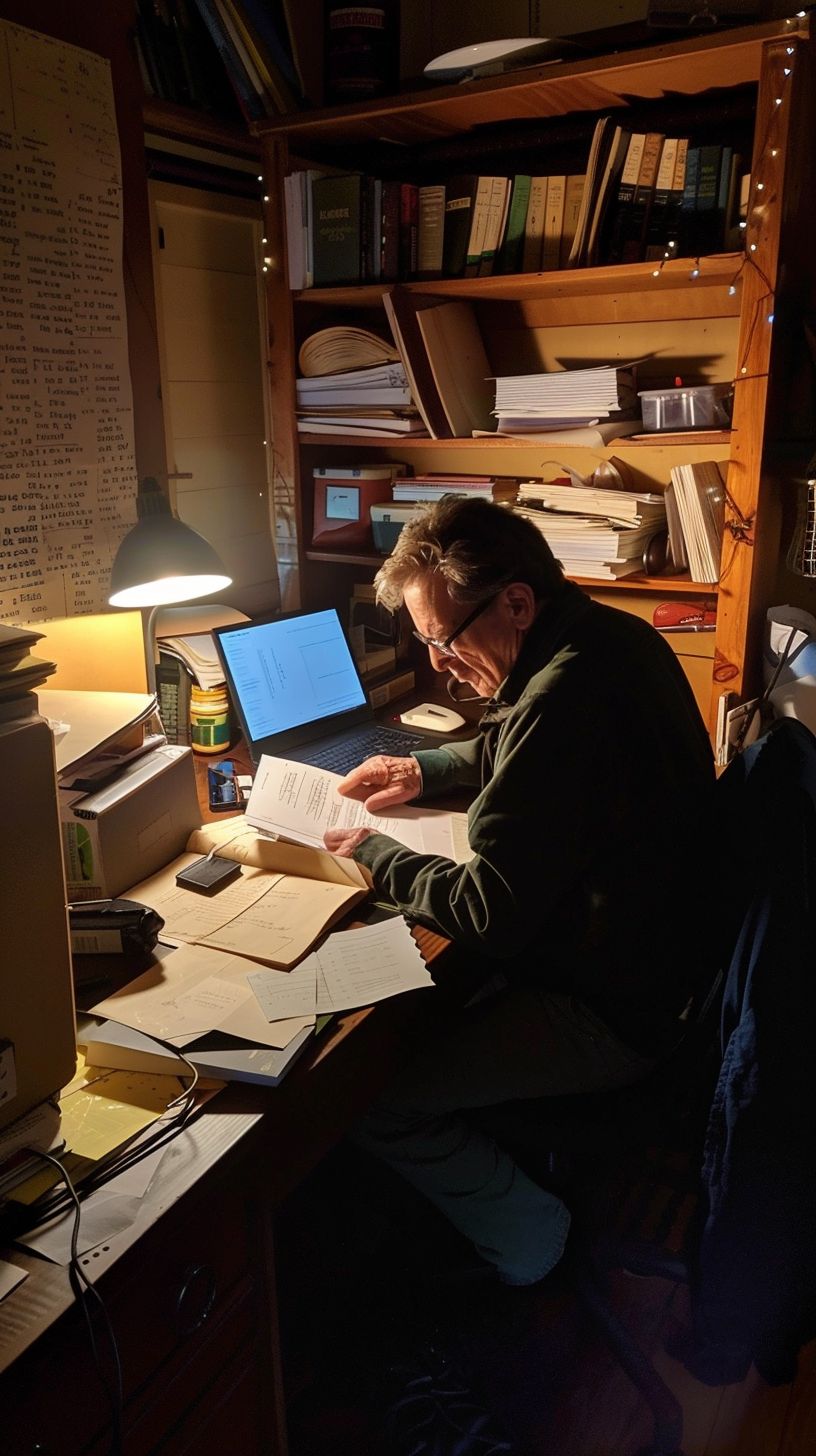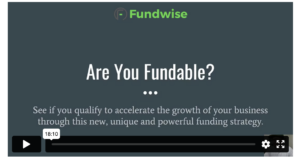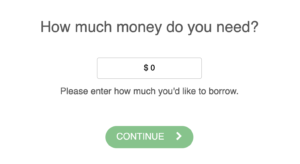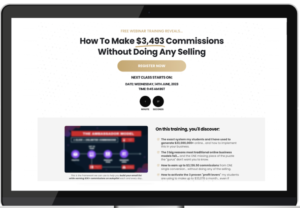Analyzing Frank Kern’s Sales Letter: Effective Marketing Training Discussed


Struggling to convert visitors into buyers? Frank Kern’s annual consulting sales letter, running since 2012, offers insight. This analysis breaks down its persuasive elements and copywriting techniques.
Read on for key strategies that work.
Overview of Frank Kern’s Sales Letter
 Frank Kern’s sales letter is long and well-structured, grabbing attention from the start. It uses a strong headline and powerful lead-in to pull readers in.
Frank Kern’s sales letter is long and well-structured, grabbing attention from the start. It uses a strong headline and powerful lead-in to pull readers in.
Structure and Length
Frank Kern’s sales letter perfectly delivers its message in roughly 2000 words. This length maintains an equilibrium, keeping readers attentive without bombarding them. The format is fluid and comprises of vital elements: an attention-grabbing headline, an engaging lead-in, a persuasive main argument for the sale, ending with a striking close and an appealing false close.
It concludes with assurances to comfort the reader and ends on a positive vibe with the postscript (P.S.) section targeting those making last-minute decisions.
In today’s rapid digital world, direct yet impactful messages are most compelling.
Kim has observed a shift towards even longer letters in certain markets, reaching over 10,000 words. Yet, Kern demonstrates that effectiveness isn’t always dependent on the number of words but how effectively each section meets its objective—steering readers from being intrigued to gaining confidence in their decision to purchase.
This strategy fits perfectly with swipe file archives‘ knowledge on creating content focused on conversion and using risk mitigating techniques where necessary.
Headline and Lead In
The title of Kern’s sales letter seizes attention instantly. It queries, “WOULD YOU LIKE ME TO PERSONALLY DOUBLE, TRIPLE, OR EVEN QUADRUPLE YOUR BUSINESS…FOR FREE?” This potent question employs the 4U’s principle: it’s distinctive, practical, immediate, and highly specific.
It engages readers by proposing a significant advantage without demanding money in advance. The introduction comprises around 10% of the entire letter. In this part, a transparent message about feasible outcomes is present to establish accurate anticipations.
This tactic confirms that readers know precisely what they’re signing up for.
This method is in harmony with contemporary marketing strategies such as developing conversion-oriented websites and effective ad copy as elaborated in swipe studies forums. By referring to “risk reversal,” Kern connects with a primary psychological trigger initially, making his offer challenging to dismiss.
He even succeeds in incorporating components like social proof and clear action prompts from the start which are vital in today’s marketing scene as per Mike Schauer. The format is simple yet enticing enough to stimulate readers to opt-in or subscribe to an email list to discover more about the potential massive growth of their business.
Key Components of the Sales Letter

The key parts of the sales letter make it strong. They cover what is offered, how it’s sold, the promise made to the reader, and how the letter ends.
Offer and Sales Argument
Frank Kern presents a strong sales argument in his letter. He promises that clients can earn double their investment from a consulting service fee of $3,860, making the offer very tempting.
This offer is for anyone looking to get more successful promotions and increase conversion-focused websites. Kern positions himself as a trusted friend, aiming to build long-term relationships with his clients.
Double your investment with just one decision.
Next, he talks about guarantees and how they make opting in an easy choice for his audience’s inbox or Instagram feed.
Guarantee and Close
Moving from the offer and sales argument, Frank Kern makes sure customers feel safe with a strong guarantee. He promises to give clients $1,400 back if they think the consultation didn’t help them.
This shows he believes in what he’s selling. Also, customers can keep their product and still get a full refund if not happy, with no time limit on this offer.
The close of the sales letter is smart. It includes a section that assumes you’re ready to opt in. This method makes it easy for people to decide to buy without feeling pushed. So, by giving clear options and using calls to action, Kern ends his sales message on a high note, making sure it lines up with what modern customers expect from an email or any direct talk from a brand or salesperson.
False Close and Postscript (P.S.)
The sales letter tricks you into thinking it ends by offering a free 90-minute training session. This false close makes you believe that’s the final deal. But then, the P.S. section kicks in, summarizing the offer and pushing the call to action again with clear urgency: “send me the book.” Plus, there’s a signature promoting a “FREE 80 PAGE E-BOOK” called “201 Ways To Live Better On Less Money.” It’s clever because it grabs attention right when you might click away.
This strategy paints a clear picture of how to keep readers hooked till the very end and encourage them to act now. By highlighting extra resources like an advanced training session and an e-book, it adds value for email subscribers without seeming too pushy.
Psychological Triggers Used in the Sales Letter

Frank Kern’s sales letter uses smart moves to make people want to buy. It taps into feelings, makes people feel they need the product now, and shows Kern as someone you can trust.
Creating Urgency
Frank Kern makes his sales letter stand out by highlighting scarcity and exclusivity. He does this by stating there are only 48 spots available for consulting. This tactic pushes readers to act fast if they want a spot.
The letter also uses a close/false close technique, making you think you’ve made the decision to buy already.
Act now before the limited spots fill up.
This method ensures readers feel an immediate need to respond, securing their place before it’s too late. By giving a specific number, Kern reinforces urgency and drives quick action from potential clients interested in emailz marketing training.
Building Credibility
Shifting focus from creating urgency, making people believe the message is also key. Frank Kern does this by using his authority in marketing. He talks about making over $47 million.
This shows he knows how to sell online and make money. He also has a consulting application on a website for those who want more help. By being open about what he offers and showing real success, Frank makes people trust him.
They see he’s not just talking; he has real results to show.
He uses clear stats and an easy way to apply for consulting to build trust. People can easily check out his claims and get more help if they need it by visiting his website link provided in the sales letter.
This approach makes sure that what Frank says feels true and reliable, helping him build a strong connection with readers.
Evoking Emotions
Frank Kern’s sales letter makes readers feel emotions. It helps them see themselves as trusted friends. This builds strong, lasting relationships. The letter does this by comparing to later works with Ryan Deiss on a funnel program.
It shares stories that touch hearts.
The goal is for over 15,000 marketers and copywriters to join updates on new “Swipe Studies.” This shows how the sales letter connects with people on a deep level, making them act.
Now, let’s move to the next part about storytelling elements in copywriting techniques.
Copywriting Techniques Employed

Frank Kern uses smart writing tricks in his sales letter, like sharing stories, talking directly to you, and choosing strong words. Learn more about how to grab attention with your words.
Storytelling Elements
Storytelling grabs people’s attention. Frank Kern’s sales letter does this well by telling stories instead of just listing what the product does. He knows that a good story can make someone see a common product in a new light.
Gary Halbert, another marketing genius, also used stories to sell products. He often told stories that made readers trust him and feel he was reliable.
A good story beats a feature list every time.
Kern and Halbert focus on making their stories sound real. This way, even skeptical people start to believe them. Through storytelling, they show how their products solve problems or improve lives, which makes readers want to buy.
Direct Address and Questions
Moving from the art of storytelling, Frank Kern’s sales letter uses direct address and questions to grab attention. This technique makes readers feel he is talking right to them.
For example, the headline asks if you want him to increase your business for free. This question pulls readers in, making them want to read more.
Kern also uses direct questions throughout his sales letter. These questions get readers thinking about their own situations. They might wonder how they can grow their businesses or what steps they should take next.
By engaging readers this way, Kern ensures they stay interested and keep reading about his offer. The use of these personal touches helps break down walls, making the reader more open to what comes next.
Use of Power Words
Frank Kern’s sales letter effectively utilizes influential words to captivate attention and prompt action. Expressions like “revolutionary,” “exclusive,” and “free” ignite curiosity and urge readers to continue.
Each expression is selected for its potent impact, intensifying the persuasiveness of the message. These potent phrases assist in illustrating a vibrant image of the benefits that await the reader, transforming basic sentences into enticing motives to respond.
The precise selection of words has the power to convert an ordinary sentence into a potent call to action. Kern’s method demonstrates that with wisely selected power words, you can amplify interaction and propel readers into making a decision.
This tactic is in complete harmony with contemporary marketing maneuvers that prioritize emotional bonds rather than merely laying out bare facts. Subsequently, we will examine how this strategy dovetails into the more extensive marketing training guidelines.
How the Sales Letter Aligns with Modern Marketing Training
Frank Kern’s sales letter shows how to use social proof, like success stories, making people trust the message. It focuses on benefits rather than just listing features and calls readers to take action clearly.
Leveraging Social Proof
Frank Kern’s sales letter shows how powerful social proof can be. He uses stories of client success and media features to show his methods work. Telling about over 15,000 marketers and copywriters who follow his updates proves many trust him.
This makes people more likely to join because they see others getting good results.
Join over 15,000 marketers and copywriters who receive new Swipe Studies updates.
Next, we focus on the benefits of products rather than just their features.
Focusing on Benefits Over Features
After showing how social proof boosts a sales letter, we move to why focusing on benefits matters more than listing features. This approach turns the spotlight on what customers will gain.
Instead of saying a consulting application is available at a website, it’s better to highlight that this application helps you become seen as a trusted friend and fosters long-term relationships.
Applying “two men” style in Facebook ads, email funnels, and sales pages makes the message clear: using these techniques can change how customers view your business.
Talking about benefits also means explaining how these methods lead to real-life gains for the audience. For instance, being viewed as a trusted friend by clients doesn’t just sound nice; it opens doors for deeper connections and repeat business.
This strategy ensures that every piece of communication, be it through Facebook ads or emails, is focused not just on what you’re offering but on how it enriches the customer’s life or work.
Clear Call to Action
Transitioning from emphasizing advantages over traits directly leads to making sure the message encourages an action. Frank Kern’s sales copy does exceptionally well by incorporating an unmistakable appeal for action, such as “send me the book” on a conspicuous button.
This unadorned yet impactful phrase instructs readers on their following steps, avoiding ambiguity. Moreover, the letter skillfully returns to this command in the postscript (P.S.) section, restating the appeal and summarizing the proposal for those who quickly scrolled to the finish.
Providing an additional push with a complimentary 90-minute training session presented as a ‘false close,’ it finalizes the transaction for several readers, demonstrating how direct instructions combined with extras can notably amplify interaction and reply rates.
Analysis of Audience Engagement
To see if people like what Frank Kern is saying, we look at how they react. We check if his message fits what they need and if he talks to them in a special way.
Understanding Audience Needs
Frank Kern targets business owners who are doing well but seek better marketing to increase their profits. He knows exactly what they need: more money from the same amount of work or less.
By using their existing cash flow, he shows how his strategies can boost their earnings significantly. Kern makes a bold promise too. If clients don’t see value in his consultation, he offers to pay them $1,400 back.
This approach directly addresses the audience’s desire for risk-free solutions and demonstrates an understanding of their fear of wasting money. His message is clear: trust me to improve your business without any loss on your part.
Personalization Techniques
Personalization techniques make the reader feel like the message is just for them. Frank Kern uses these methods well. He grabs attention by acting like a “Desperate Nerd.” This approach makes his sales letter stand out.
He talks directly to you, asking questions and sharing stories that seem meant for your ears only. Imagine getting a letter that understands exactly what you need. That’s how Kern’s letters work.
Kern also adds details from real success stories and media mentions. It shows he knows what he’s talking about. You see proof that his methods have worked for others, which makes you think they can work for you too.
This way of mixing personal touch with solid evidence creates a strong connection with the audience.
Impact of the Sales Letter
The sales letter boosted sales numbers, showing it worked well. People who read it shared good things about it, proving its success.
Conversion Rates
Analyzing the impact of Frank Kern’s sales letter on conversion rates reveals its effectiveness. Kern’s strategy integrates a clear proposition where clients could potentially double their investment with a consulting service fee previously set at $3,860. This adjustment suggests the service was initially underpriced, creating a value perception. The sales frameworks, including a structured close and a false close, further imply the reader’s readiness to commit, enhancing conversion likelihood.
| Strategy Component | Impact on Conversion Rates |
|---|---|
| Financial Proposition | Increases perceived value |
| Consulting Service Fee Adjustment | Highlights underpricing and value |
| Close/False Close Strategy | Prepares reader for commitment |
This table summarizes how each strategic component of Kern’s sales letter directly impacts conversion rates. By highlighting the financial proposition, adjusting the service fee, and effectively using closing techniques, Kern’s approach significantly increases the likelihood of converting readers into clients.
Feedback and Testimonials
People say Frank Kern’s sales letter works. The Niche Man wrote in a forum post that he expects to earn $200 from what he learned. User ATT asked if anyone has made the $100 deposit yet.
This shows real people are trying the methods and talking about their results.
Next, we’ll look at the conclusion of our analysis.
Conclusion
Frank Kern’s sales letter teaches us a lot about effective marketing. He uses clear structure, powerful words, and understands his audience well. This letter shows us that knowing how to speak to people’s needs and emotions can lead to great success.
Frank also proves that with the right approach, you can turn readers into clients. His strategies in writing show what it takes to win in today’s competitive market.






Leave a Reply